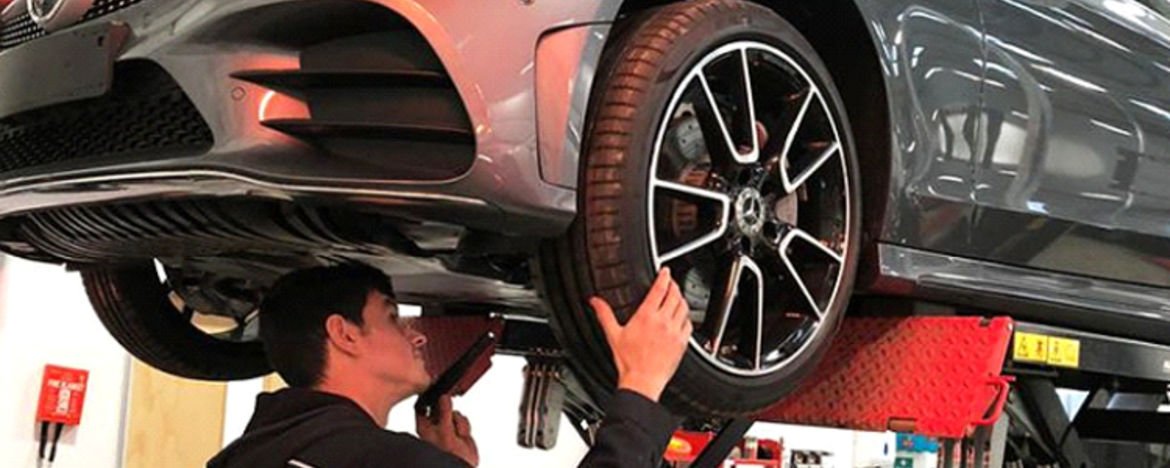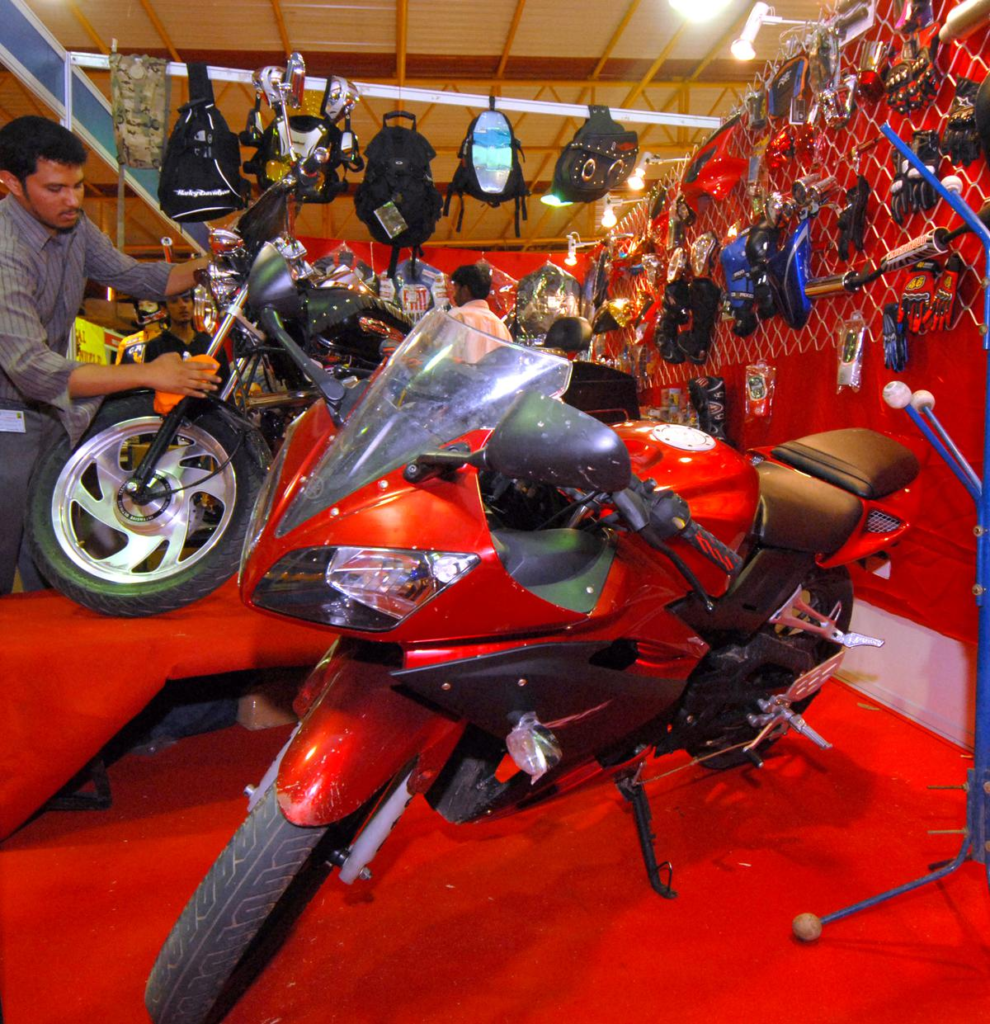Free PDI Supervisor Course (6Months)
PDI Supervisor:
Brief Job Description
A PDI Supervisor is responsible for functional and visual inspection of the overall vehicle before delivery to ensure that it meets the customers expectations. The individual is responsible for thorough product check including the oil and lubricant levels and other quality checks as specified by the OEM along with ensuring that the vehicle is cleaned and thoroughly washed before delivery.
Personal Attributes
An individual on this job must have good communication and interpersonal skills in addition to being a team player, as the job requires coordination with other workshop technicians, spare parts and the stockyard manpower along with the sales team. The individual must have a technical bend of mind to understand the technical aspects in a vehicle. The individual must also be system and processes person so as to ensure adherence to all PDI process guidelines, procedures, systems and policies.


Plan and organise work to meet expected outcomes:
Elements and Performance Criteria
Work requirements including various activities within the given time and set quality standards
To be competent, the user/individual on the job must be able to:
PC1. keep immediate work area clean and tidy
PC2. treat confidential information as per the organisations guidelines
PC3. work in line with organisations policies and procedures
PC4. work within the limits of job role
PC5. obtain guidance from appropriate people, where necessary
PC6. ensure work meets the agreed requirements
Appropriate use of resources
To be competent, the user/individual on the job must be able to:
PC7. establish and agree on work requirements with appropriate people
PC8. manage time, materials and cost effectively
PC9. use resources in a responsible manner
Knowledge and Understanding (KU)
The individual on the job needs to know and understand:
KU1. the organisations policies, procedures and priorities for area of work, role and responsibilities in carrying out that work
KU2. the limits of responsibilities and when to involve others
KU3. specific work requirements and who these must be agreed with
KU4. the importance of having a tidy work area and how to do this
KU5. how to prioritize workload according to urgency and importance and the benefits of this
KU6. the organisations policies and procedures for dealing with confidential information and the importance of complying with these
KU7. the purpose of keeping others updated with the progress of work
KU8. who to obtain guidance from and the typical circumstances when this may be required
KU9. the purpose and value of being flexible and adapting work plans
KU10. how to complete tasks accurately by following standard procedures
KU11. technical resources needed for work and how to obtain and use these
Generic Skills (GS)
User/individual on the job needs to know how to:
GS1. write in at least one language
GS2. read instructions, guidelines/procedures
GS3. ask for clarification and advice from appropriate persons
GS4. communicate orally with colleagues
GS5. make a decision on a suitable course of action appropriate for accurately completing the task within resources
GS6. agree objectives and work requirements
GS7. plan and organise work to achieve targets and deadlines
GS8. deliver consistent and reliable service to customers
GS9. check own work and ensure it meets customer requirements
GS10. anomalies to the concerned persons
GS11. analyse problems and identify work-arounds taking help from
GS12. apply own judgement to identify solutions in different situations
Work effectively in a team:
Elements and Performance Criteria
Effective communication
To be competent, the user/individual on the job must be able to:
PC1. maintain clear communication with colleagues
PC2. work with colleagues
PC3. pass on information to colleagues in line with organisational requirements
PC4.. work in ways that show respect for colleagues
PC5. carry out commitments made to colleagues
PC6. let colleagues know in good time if cannot carry out commitments, explaining the reasons
PC7. identify problems in working with colleagues and take the initiative to solve these problems
PC8. follow the organisations policies and procedures for working with colleagues
PC9. ability to share resources with other members as per priority of tasks
Knowledge and Understanding (KU)
The individual on the job needs to know and understand:
KU1. the organisations policies and procedures for working withcolleagues, role and responsibilities in relation to this
KU2. the importance of effective communication and establishing goodworking relationships with colleagues
KU3. different methods of communication and the circumstances inwhich it is appropriate to use these
KU4. benefits of developing productive working relationships withcolleagues
KU5. the importance of creating an environment of trust and mutualrespect
KU6. whether not meeting commitments, will have implications onindividuals and the organisation
KU7. different types of information that colleagues might need and theimportance of providing this information when it is required
KU8. the importance of problems, from colleagues perspective andhow to provide support, where necessary, to resolve these
Generic Skills (GS)
User/individual on the job needs to know how to:
GS1. complete well written work with attention to detail
GS2. read instructions, guidelines/procedures
GS3. listen effectively and orally communicate information
GS4. make decisions on a suitable course of action or response
GS5. plan and organise work to achieve targets and deadlines
GS6. check that the work meets customer requirements
GS7. deliver consistent and reliable service to customers
GS8. apply problem solving approaches in different situations
GS9. apply balanced judgements to different situations
GS10. apply good attention to detail
GS11. check that the work is complete and free from errors
GS12. get work checked by peers
GS13. work effectively in a team environment

Maintain a healthy,safe and secure working environment:
Scope
This unit/task covers the following:
Resources (both material & manpower) needed to maintain a safe working environment as per the prevalent norms & government policies including emergency procedures for Illness, accidents, fires or any other reason which may involve evacuation of the premises
Elements and Performance Criteria
Resources needed to maintain a safe, secure working environment
To be competent, the user/individual on the job must be able to:
PC1. comply with organisations current health,safety and security policies and procedures
PC2. report any identified breaches in health,safety, and security policies and procedures to the designated person
PC3.. Coordinate with other resources at the workplace to achieve the healthy, safe and secure environment for all incorporating all government norms esp. for emergency situations like fires,earthquakes etc.
PC4. identify and correct any hazards like illness, accidents, fires or any other natural calamity safely and within the limits of individuals authority
PC5. report any hazards outside the individuals authority to the relevant person in line with organisational procedures and warn other people who may be affected
PC6. follow organisations emergency procedures for accidents, fires or any other natural calamity
PC7. identify and recommend opportunities for improving health,safety, and security to the designated person
PC8. complete all health and safety records are updates and procedures well defined
Knowledge and Understanding (KU)
The individual on the job needs to know and understand:
KU1. legislative requirements and organisations procedures for health, safety and security and individuals role and responsibilities in relation to this
KU2. what is meant by a hazard, including the different types of health and safety hazards that can be found in the workplace
KU3. how and when to report hazards
KU4. the limits of responsibility for dealing with hazards
KU5. the organisations emergency procedures for different emergency situations and the importance of following these
KU6. the importance of maintaining high standards of health, safety and security
KU7. implications that any non-compliance with health, safety and security may have on individuals and the organisation
KU8. different types of breaches in health, safety and security and how and when to report these
KU9. evacuation procedures for workers and visitors
KU10. how to summon medical assistance and the emergency services,where necessary
KU11. how to use the health, safety and accident reporting procedures and the importance of these
Generic Skills (GS)
User/individual on the job needs to know how to:
GS1. complete accurate, well written work with attention to detail
GS2. read instructions, guidelines/procedures/rules
GS3. listen and orally communicate information
GS4. make decisions on a suitable course of action or response
GS5. plan and organise work to achieve targets and deadlines
GS6. build and maintain positive and effective relationships withcolleagues and customers
GS7. apply problem solving approaches in different situations
GS8. analyse data and activities
GS9. apply balanced judgements to different situations
GS10. apply good attention to detail
GS11. check that the work is complete and free from errors
GS12. get work checked by peers
GS13. work effectively in a team environment

Ensure pre-delivery check for OEM vehicle:
Scope
This unit/task covers the following:
supervise technical inspection of the vehicle to find any shortcomings and coordinate with other personnel in workshop service to ensure all systems and processes are in place before delivery ensure washing and proper cleaning of the vehicle before the actual delivery
Elements and Performance Criteria
Supervise technical inspection of the vehicle & remove the shortcomings before the actual delivery
To be competent, the user/individual on the job must be able to:
PC1.. ensure that all vehicles are picked up from the dealer stockyard and tracked as per the delivery schedule conveyed by the sales manager to ensure timely and hassle-free delivery to the customer
PC2.. monitor the pdi inspection technicians to ensure that all inspections and repairs are performed correctly and efficiently and maintain a high level of quality as per the oem checklist
PC3.. manage the flow of all PDI work as per the checklist including: technician availability vehicle inspection (including mandatory levels of lubricants, oils, coolant and grease) vehicle service and repair completion (in case required), accurate data capturing & deviations if observed
PC4.. coordinate with the spare parts manager to ensure supply of materials, parts or lubricants (coolant, oils, grease) and other requirements
PC5.. ensure that minimum level of petrol/ diesel/ cng is available as per the quantity prescribed by the oem so that the vehicle can be driven out of the dealership
PC6.. conduct periodic spot checks of a few vehicles to ensure maximum adherence for all checks done on the vehicle in a timely manner before the delivery
PC7.. ensure that all inspections and reworks are consistently recorded and accurately documented
PC8.. report to the sales manager, workshop incharge and gm service in case of any major repair / service needs to be done on the inspected vehicle prior to its delivery
PC9.. prepare periodical reports to highlight any reoccurring issues while conducting pdi on the vehicles
PC10.. manage the maintenance of workshop facilities and other tools including fixed equipment which may be required for the pdi operations.
PC11.. ensure discipline and adherence of pdi technicians to organisations regulations
Knowledge and Understanding (KU)
The individual on the job needs to know and understand:
KU1. standard operating procedures of the OEM related to pre-delivery inspection (PDI)
KU2. standard operating procedures for servicing, repair in case required post inspection and prior to actual delivery
KU3. documentation requirements for each procedure carried out as part of roles and responsibilities regarding the pre-delivery inspection (PDI)
KU4. safety requirements for equipment and components prescribed by the oem while doing the pdi of the vehicles
KU5. organisational and professional code of ethics and standards of practice
KU6. safety and health policies and regulations for the workplaceas well as for automotive trade in general (e.g. safe practices while working in pits/ under vehicles)
KU7. the technical specifications of various oemvehicles as well as those manufactured by the competitors
KU8. the basic technology used in the overall functioning of various components/ aggregates (especially the core aggregates like engine, gear box, propeller shaft, clutch and brake assembly, transmission systems, axles etc.)
KU9. relevant and up-to-date knowledge of vehicle design, manufacture, consumer and vehicle legislation, industry and trade practices
KU10. the technical aspects of pdi communicated from the oem (through various service circulars) and communicate it to the pdi technicians though regular meetings to ensure proper adherence
KU11. pdi procedures for fleet/ corporate customers at locations outside the workshop
KU12. how to conduct periodic spot checks of all jobs to ensure adherence to the oem checklist
KU13. how to report any deviations to the superiors in case of any urgent requirements found during the pdi of the vehicle (e.g. very low levels of brake oil, clutch plate worn off already which may happen during the transportation of the vehicle from the oem stockyard to the dealer stockyard)
Generic Skills (GS)
User/individual on the job needs to know how to:
GS1. complete the checklist for PDI as per the OEM mandated documentation process
GS2. ability to communicate information and ideas in writing so others will understand
GS3. write any additional requirement of work on the vehicle while inspection before the delivery
GS4. write in at least one language
GS5. read and understand the checklist for the inspection of the vehicle prior to delivery (pdi) along with any changes prescribed in the checklist for newly launched vehicles/ existing refreshes of the vehicle
GS6. read instructions mentioned on the job card by technicians in case of any repair to be done on the vehicle prior to delivery
GS7. read and understand various service & maintenance circulars issued by the oem regarding the inspection of the vehicle
GS8. interact with the customer in a professional and courteous manner and understand in case they have any issues regarding the vehicle before the delivery
GS9. interact with internal workshop stakeholders (technicians, spare parts manager, workshop manager, gm service) to ensure that in case any repair needs prior to delivery, it is taken care of
GS10. communicate with oem sales and service manpower in case of repeated issues while inspection prior to the delivery
GS11. analyse proper pdi procedures to be implemented in pre-delivery check
GS12. decide on level of service / repair to be done in case of requirement found post the inspection of the vehicle
GS13. decide on the level of top up to be done of petrol/ diesel and other lubricants (oil, coolants etc.) and grease if found to be below the prescribed levels as per the pdi checklist of the OEM
GS14. plan work according to the required schedule and location
GS15. ensure that the vehicle expected to be delivered are inspected before and in case of any service/ repair to be done is done before the expected delivery date
GS16. ensure that customers needs are assessed and customize in case required (for example customer might want any specific brands of tyres, battery or additional guard in front/ carrier on top of cars etc.)
GS17. ensure timely communication of the additional customization in a vehicle to the spares parts manager (who can procure in time) and workshop in charge (in case any technician is required to fit it)
GS18. identifycomplex problems and reviewing related information to develop and evaluate options and implement solutions
GS19. liaise with internal workshop stakeholders (technicians, spare parts manager, workshop manager, gm service) to ensure proper service and in case of any repair (if required) of the vehicle to be done as mandated by the OEM PDI guidelines
GS20. analyse available information and evaluate results to identify the best solution available for a particular fault/ any other service requirement found before the delivery
GS21. evaluate the complexity of service or repair to be performed on the vehicle in exceptional cases after it has been brought from stockyard from inspection before delivery (for example- battery, wiper motors, spare wheels could be missing or there could be low level of grease or lubrication in various components)
GS22. using logic and reasoning to identify the strengths and weaknesses of alternative solutions, conclusions or approaches to problems
GS23. evaluate the information gathered by the pdi technicians from the checklist and physical inspection and take appropriate action to ensure delivery of the vehicle in a timely manner and in the best condition
Assessment Guidelines:
- Criteria for assessment for each Qualification Pack will be created by the Sector Skill Council. Each Element/ Performance Criteria (PC) will be assigned marks proportional to its importance in NOS. SSC will also lay down proportion of marks for Theory and Skills Practical for each Element/ PC.
- The assessment for the theory part will be based on knowledge bank of questions created by the SSC.
- Assessment will be conducted for all compulsory NOS, and where applicable, on the selected elective/option NOS/set of NOS.
- Individual assessment agencies will create unique question papers for theory part for each candidate at each examination/training center (as per assessment criteria below).
- Individual assessment agencies will create unique evaluations for skill practical for every student at each examination/ training center based on these criteria.
- To pass the Qualification Pack assessment, every trainee should score the Recommended Pass % aggregate for the QP.
- In case of unsuccessful completion, the trainee may seek reassessment on the Qualification Pack.



